Creating a Niche in Reflexology
Friday, July 25, 2025, 10:43 AM
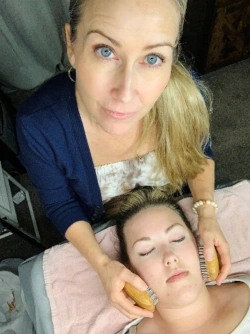
With Member Aimee Sebastian
Reflexology is an evolving practice with the potential to address a wide range of symptoms and health concerns.
We sat down with Saskatchewan-based NHPC member Aimee Sebastian to dive into the world of reflexology, raise awareness of this impactful practice, and explore how she's carved out a unique niche in the industry — and how you can too.
Aimee's Journey to Reflexology
Aimee had a successful career as a dental assistant for over 20 years. It wasn't until she started facing her own health issues that she discovered a path in holistic health care.
As a single mother of three, she was dealing with stress, chronic cluster migraines, visual disturbances, and pain — even losing feeling on her right side.
After exploring various medical avenues without a clear diagnosis, she was inspired to take charge of her health and discovered the benefits of holistic health care.
Aimee first came across facial reflexology through the Dien Chan multi-reflexology program, and her passion was ignited. She went on to complete the Dien Chan Clinician exam after 18 months of study.
With her background in dental work, it felt natural for Aimee to transition into facial reflexology. In 2009, she opened her own studio, Indulgence Lifestyle Studio, in Battleford, SK. In 2022, she moved her business to Saskatoon to expand and help others take their health into their own hands.
What is Reflexology?
Reflexology is a whole-body treatment most commonly associated with the feet. Reflexology maps project the internal organs and musculoskeletal structures throughout the body onto specific areas of the feet.
Practitioners use these maps to guide treatment, stimulating reflex points in the foot to trigger stimulation in a corresponding organ or structure in the body, increasing circulation, releasing tension, and guiding the body to homeostasis.
"Reflexology sends an instant signal to the brain to self-correct," Aimee says.
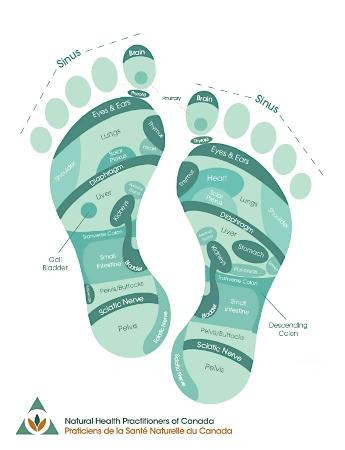
Facial Reflexology
Reflexology is also practiced on the hands, ears, face, and cranium; though these applications are less widely known, this is exactly where Aimee thrives and built her business on.
Facial reflexology is precisely what it sounds like: reflexology performed on the face rather than the feet.
"The maps are transferable from foot to face as they hold some of the same reflections," Aimee explains.
There are 257 fixed points and multiple facial maps associated with facial reflexology. Each zone reflected in the facial maps correspond with an area in the body. By manipulating one of these zones, the practitioner can affect the body's overall functioning.
Your face tells your story. With the right care, it can also tell your healing. Aimee
Misconceptions
A big misconception about reflexology is that it is often mistaken or mislabeled as a massage, but it is an entirely different practice.
Reflexology is identified by the stimulation of specific reflex points to trigger stimulation in a corresponding organ or structure. It does not include the kneading of muscles.
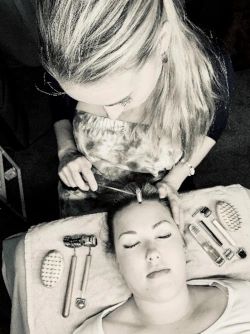
It may include the use of reflexology tools, such as yin-yang rollers (a double-sided tool with each side representing a yin or yang principle to restore balance in the body, where yin represents calm and cool, while yang represents warmth and energy).
A foot massage focuses on manipulating soft tissue, relaxing muscles and improving circulation through rubbing and kneading. It may use products such as massage oils, lotions, and rollers.
Another misunderstanding is that reflexology may be claimed under massage therapy benefits. Unfortunately, this is not the case, though the NHPC Industry Relations team continues to advocate for the insurance industry to improve reflexology coverage in Canadian's health benefits plans.
Education also varies between reflexology and massage therapy in the curriculum, techniques, and program length. However, they are both recognized modalities by the NHPC.
Benefits of Reflexology
Aimee often sees clients coming in for symptoms impacting the face and head, such as temporomandibular joint (TMJ) dysfunction, headaches, sinusitis, tinnitus, dry mouth, and jaw tension. She also sees many clients for stress and anxiety relief.
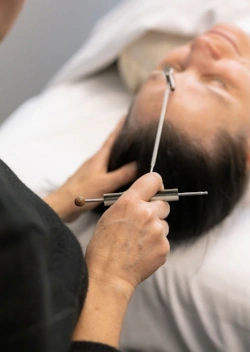
"The sky's the limit on what we can address," Aimee says of the benefits of reflexology.
And the research agrees. A 2022 study found reflexology to be effective in reducing symptoms of cancer patients undergoing chemotherapy, such as stress, anxiety, nausea, and fatigue. (Learn even more about the research behind this practice).
Reflexology is generally safe for everyone. When working in tandem with other modalities, such as massage therapy and physiotherapy, reflexology can be a vital part of a comprehensive wellness plan.
Interconnectedness of the Body
Aimee once worked with a client experiencing persistent shoulder pain.
Instead of focusing directly on the shoulder, she began treatment on a completely different area — the hips. To her client's surprise, this approach led to her first significant reduction in pain.
After the session, her client said, "You just made me a believer!"
It's common to assume that the treatment should target only the area where the pain is felt. But Aimee has found that addressing interconnected regions, like the hips, shoulders, and neck, can ease tension in unexpected places, like a clenched jaw.
"It's amazing how something can be activated by working on something else," Aimee says.
And she believes this is true of reflexology: you simply have to go try it and see for yourself.
Connect with Aimee
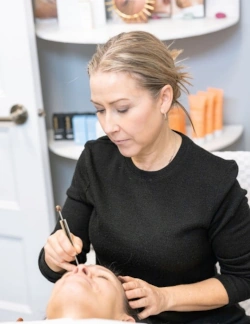
Aimee invites you to keep up with her projects and speaking engagements at Indulgence Lifestyle Studio on Facebook and Instagram.
Stay tuned to Aimee's website for details on her upcoming book, Reflexology Redefined, releasing Fall 2025.
As for what she'd say to new practitioners who may be looking to find their own niche in the industry? "Go for it! Dive in. Follow your passion," Aimee encourages.

